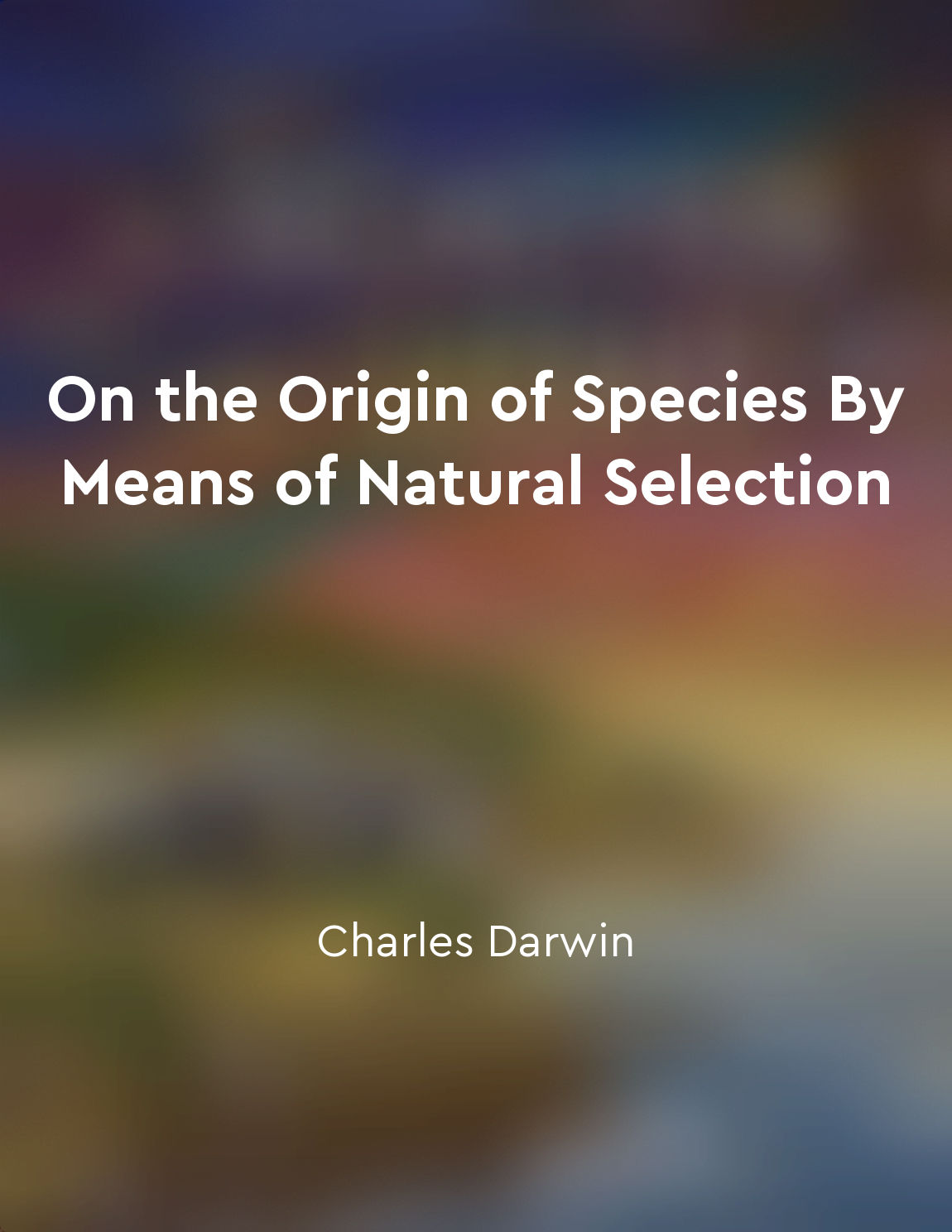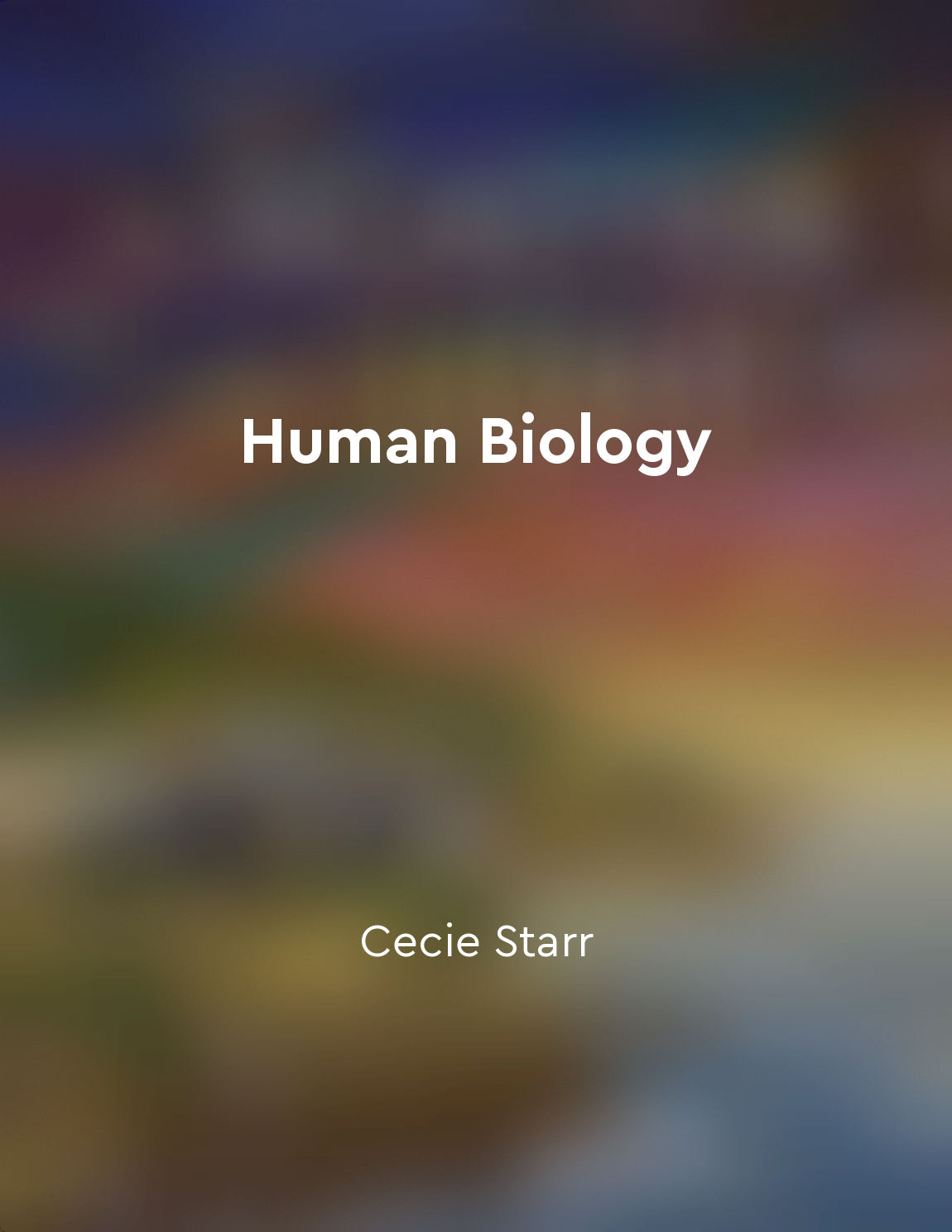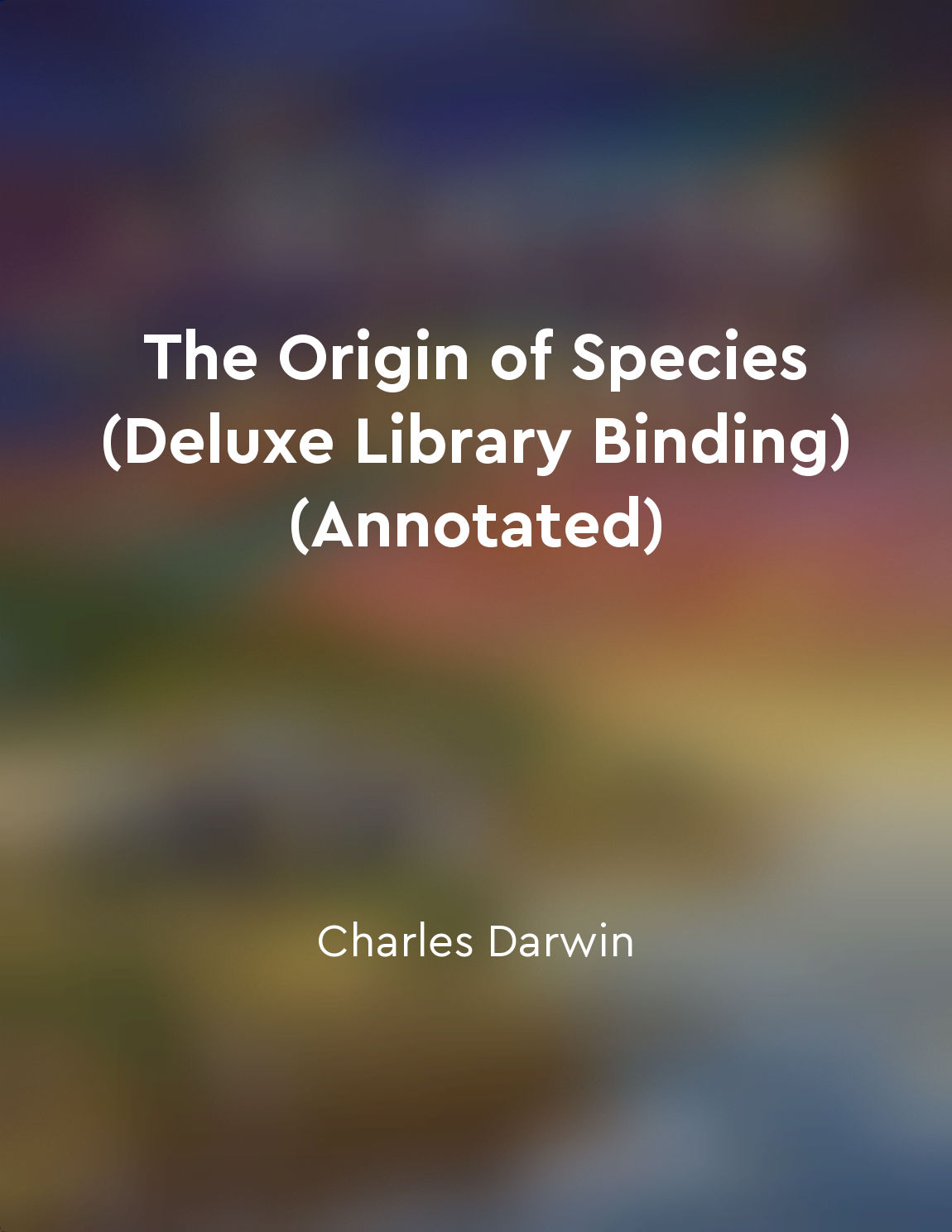Adaptations develop through natural selection from "summary" of The Structure of Evolutionary Theory by Stephen Jay Gould
The central concept of evolution by natural selection lies in the idea that organisms possessing advantageous traits are more likely to survive and reproduce, passing those traits on to future generations. This process results in the gradual accumulation of adaptations that are well-suited to a particular environment. These adaptations are shaped by the pressures and constraints of the environment in which the organisms live, with those that confer a survival or reproductive advantage being favored by natural selection. Natural selection acts as a filter, allowing only those individuals with beneficial traits to pass their genes on to the next generation. Over time, this leads to the spread of traits that enhance an organism's chances of survival and reproduction in a given environment. The process is not directed or purposeful, but rather the result of differential reproductive success among individuals with varying traits. Adaptations can take a variety of forms, from physical characteristics like the shape of a bird's beak to behavioral patterns such as mating rituals. These traits are shaped by interactions between organisms and their environment, with individuals better adapted to their surroundings being more likely to thrive and reproduce. As a result, adaptations are not fixed or immutable but can change in response to shifts in the environment or the emergence of new selective pressures. The concept of adaptations developing through natural selection provides a powerful framework for understanding the diversity of life on Earth. It highlights the dynamic relationship between organisms and their environment, emphasizing the role of chance and contingency in shaping evolutionary outcomes. By studying the process of natural selection, scientists can gain insights into the mechanisms driving evolution and the patterns of biodiversity that we observe today.Similar Posts

Embrace flexibility
Flexibility is the key to success in a rapidly changing world. It allows us to adapt to new circumstances, seize unexpected opp...

Specialization for specific environments
The adaptation of organisms to their environment is a key principle in understanding the diversity of life on Earth. As individ...

Aging is a natural part of the life cycle
As we journey through life, the inevitability of aging becomes increasingly apparent. This process is a natural part of the hum...

Species evolve through natural selection
The process of natural selection, as I have described in great detail, is the mechanism by which species evolve over time. It i...
Consumer education is essential in promoting informed choices about genetically modified foods
Consumer education plays a crucial role in shaping public opinions and attitudes towards genetically modified foods. Without pr...
Complexity can emerge from simple rules
The idea that complexity can emerge from simple rules is a central concept in evolutionary theory. It suggests that the intrica...
Genetic drift and gene flow contribute to evolution
Genetic drift and gene flow, two fundamental processes in population genetics, play crucial roles in shaping the course of evol...

Variation as fuel for evolutionary change
Variation is a fundamental aspect of the natural world, serving as the raw material upon which the process of natural selection...
The connection between mental and physical traits
The relationship between mental and physical traits is a topic of great interest and importance in the study of human evolution...

Environmental factors influence natural selection
In the struggle for existence, the environment plays a crucial role in determining which individuals are more likely to survive...
